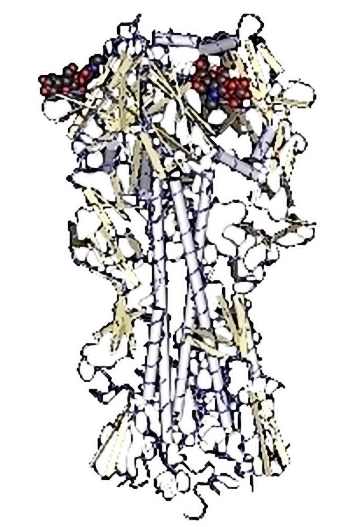Key protein detection in H5N1 virus
Scientists have discovered the structure of a key protein in the H5N1 avian influenza virus that can mutate into a deadly virus easily spread from person to person.
 Photograph of the structural model of hemagglutinin protein (Photo from foreign website) This is an important finding that helps scientists effectively monitor the genetic changes of H5N1 virus and warn early the risk of this virus having the variables change to spread from person to person.
Photograph of the structural model of hemagglutinin protein (Photo from foreign website) This is an important finding that helps scientists effectively monitor the genetic changes of H5N1 virus and warn early the risk of this virus having the variables change to spread from person to person.
In a study published in the online journal Science on March 16, scientists at Scripps Research Institute (USA) said they have identified the structure of the hemagglutinin protein. This is a protein that allows bird flu virus to enter the host, antigen first on the surface of the influenza virus.
The researchers photographed and analyzed this protein after isolating a sample of H5N1 virus from a Vietnamese boy who died of bird flu in 2004.
According to the researchers, the hemagglutinin protein binds to different cell receptors in poultry and human flu, which may explain why most bird flu viruses do not spread from person to person.
Currently, only three avian influenza viruses are capable of causing human pandemic influenza, namely H1N1, H2N2 and H3N2. The three viruses that caused pandemics in 1918, 1957 and 1968 caused tens of millions of people around the world to die after their hemagglutinin adapted to the human community.
Scientists have discovered that although the H5N1 virus's hemagglutinin looks very similar to the H1N1 virus hemagglutinin, these variants do not produce a virus suitable for human receptors.
However, scientists also note that some of these variants can cause H5N1 hemagglutinin to bind to human lung epithelial cells, making it 'foothold' in the human community.
- Detection of the H5N1 virus strain by a test
- Detection of Ebola virus shield in human cells
- Protein detection inhibits the ability of HIV to infect
- Korea: Detection of H5N8 virus in the geese
- H5N1 flu appears in poultry in Ninh Thuan
- Restart studies of H5N1
- H5N1 virus is evolving
- Cats infected with H5N1 virus?
- IAEA uses nuclear technology against H5N1 virus
- WHO announces the study of variant H5N1 avian influenza virus
- H5N1 avian influenza virus
- H5N1 virus lives for six days
 Green tea cleans teeth better than mouthwash?
Green tea cleans teeth better than mouthwash? Death kiss: This is why you should not let anyone kiss your baby's lips
Death kiss: This is why you should not let anyone kiss your baby's lips What is salmonellosis?
What is salmonellosis? Caution should be exercised when using aloe vera through eating and drinking
Caution should be exercised when using aloe vera through eating and drinking